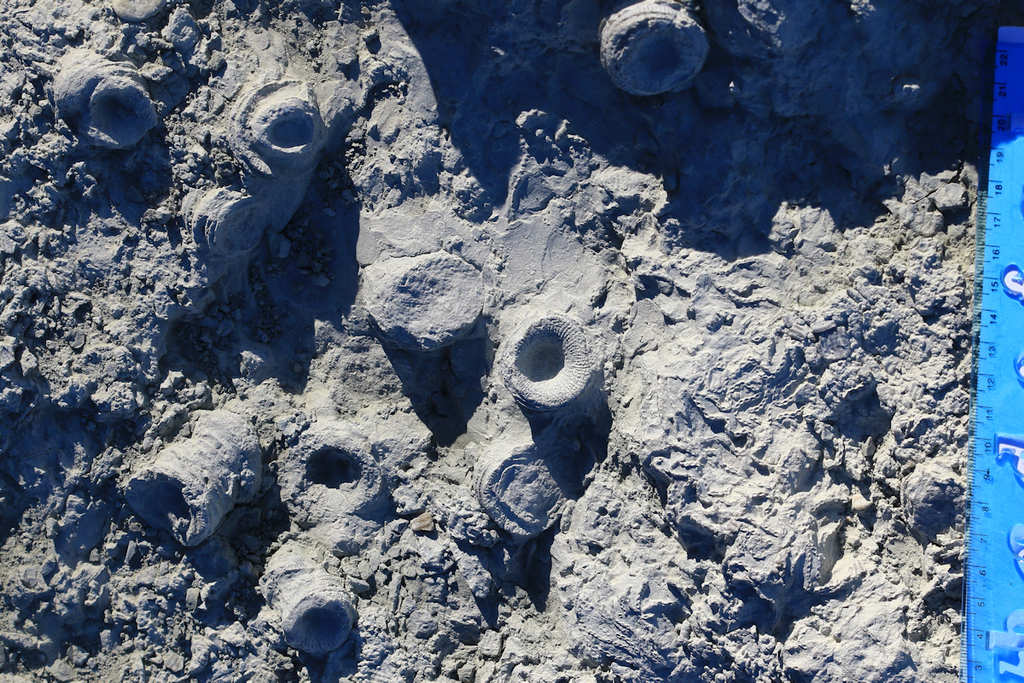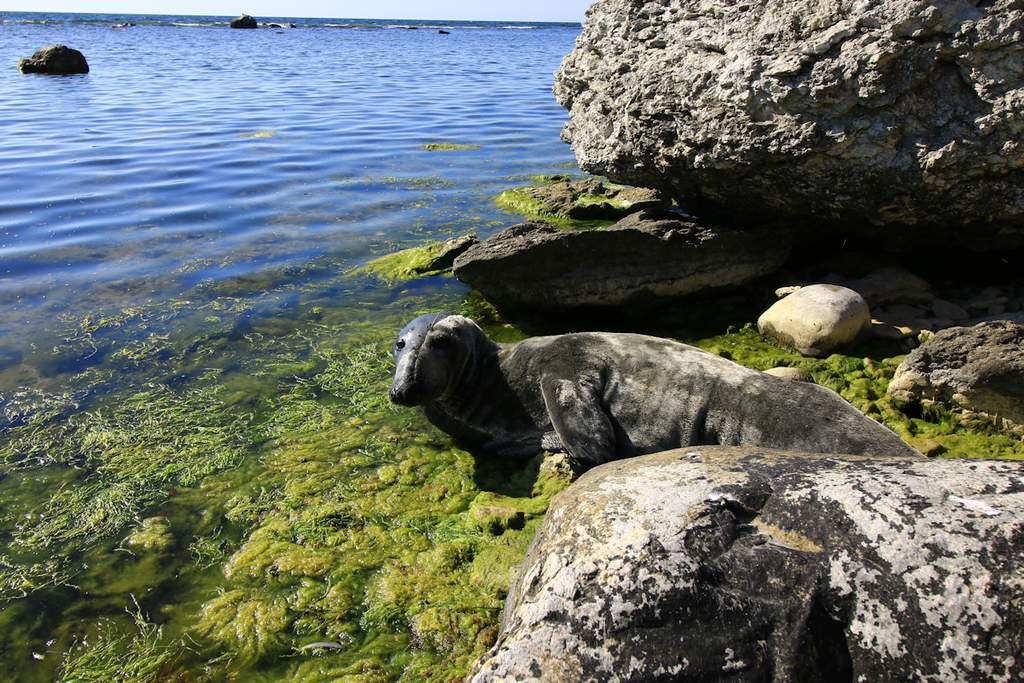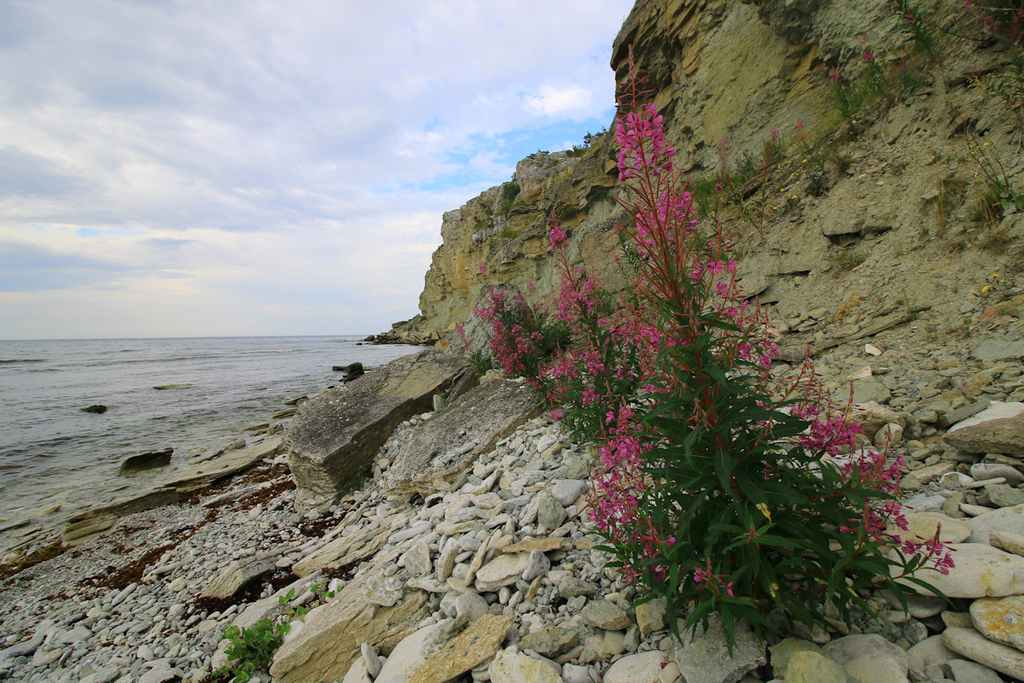Behind the science:
The Silurian mesophotic coral ecosystems: 430 million years of phot...
2019, May 27
Posted by Veronica Radice
“Ancient mesophotic coral ecosystems: Looking back at 430 million years of photosymbiosis”
What was the most challenging aspect of your study (can be anything from field, lab to analysis)?
The most challenging was the logistic part of planning our trip to Gotland – from finding access to the sites, through planning the route and fieldwork. And, however it may sound odd – finding accommodation during the peak of tourist season – Gotland has quite limited accommodation opportunities. Another problem was that the shore of Gotland is protected and the use of hammers is restricted – we were allowed to collect only these specimens that are weathered and naturally detached from the rock matrix. Work of a palaeontologist without a hammer is indeed a demanding task…
What was the most memorable moment in undertaking this study?
First moments at the cliff near Ygne – from the analysis of published data on sedimentology and the eustatic curve I was expecting to find platy corals at the bottom of this cliff. But expecting something and finding what you expected are two entirely different things. I was astonished that we have found them exactly where they were expected! Another memorable moment was finding a spectacular biostrome with tabulate and solitary rugose corals below the MCE beds (described few months earlier, Berkowski & Zapalski 2018).
 Błażej Berkowski cleaning biostrome with rugose corals at Ireviken
(C) Mikołaj Zapalski
[CC BY-NC 4.0]
Błażej Berkowski cleaning biostrome with rugose corals at Ireviken
(C) Mikołaj Zapalski
[CC BY-NC 4.0]
 Biostrome with rugose corals at Ireviken
(C) Mikołaj Zapalski
[CC BY-NC 4.0]
Biostrome with rugose corals at Ireviken
(C) Mikołaj Zapalski
[CC BY-NC 4.0]
What was your favorite research site in this study and why?
Certainly the shore between Ygne and Högklint – easily accessible, close to Visby where we were based, with spectacular cliffs, and very few people passing by. And, of course, lots of fossils.
Other than your co-authors, with whom would you like to share credit for this work?
Brian Roy Rosen from the Natural History Museum, who inspired me to make the previous study (Devonian MCEs from Poland), and asked many questions after this one was published. Most of them still lack answers, but they are inspiring! Also Grzegorz Widlicki (Univ. Warsaw), who quite quickly prepared thin sections of this material.
 Our field assistant – grey seal in Ireviken area
(C) Mikołaj Zapalski
[CC BY-NC 4.0]
Our field assistant – grey seal in Ireviken area
(C) Mikołaj Zapalski
[CC BY-NC 4.0]
 Cliffs near Ygne in the Ygne-Högklint section (uppermost strata of the Lower Visby Beds)
(C) Mikołaj Zapalski
[CC BY-NC 4.0]
Cliffs near Ygne in the Ygne-Högklint section (uppermost strata of the Lower Visby Beds)
(C) Mikołaj Zapalski
[CC BY-NC 4.0]
Any important lessons learned (through mistakes, experience or methodological advances)?
Most of biological investigations formulate hypotheses and verify them - this is not obvious for historical sciences, such as palaeontology. This was one of the rare cases where it was possible to formulate clear hypothesis and successfully test it.
Can we expect any follow-up on this work?
Yes – we just started a project that will investigate these communities in detail, so more papers to come in the next few years! Next field trip to the Silurian seas of Gotland is already at the stage of planning!
 Reefal limestones north of Ireviken – younger than MCE and representing shallower environments
(C) Mikołaj Zapalski
[CC BY-NC 4.0]
Reefal limestones north of Ireviken – younger than MCE and representing shallower environments
(C) Mikołaj Zapalski
[CC BY-NC 4.0]
 Platy specimen of favositid tabulate coral
(C) Mikołaj Zapalski
[CC BY-NC 4.0]
Platy specimen of favositid tabulate coral
(C) Mikołaj Zapalski
[CC BY-NC 4.0]
Featured article:
|
|
The Silurian mesophotic coral ecosystems: 430 million years of photosymbiosis | article Zapalski MK, Berkowski B (2019) Coral Reefs 38:137-147 |
|